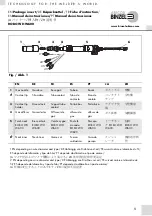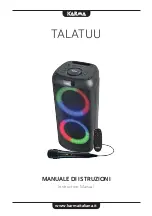
Zavarivanje Ltd.
User Manual: WALTER TIG2000
page 21 of 24
-
Do not weld containers under pressure.
-
Remove all easily flammable materials (paper, wood, etc), from the proximity of
the work-piece being welded.
-
Place welder on a steady horizontal surface to avoid its tumbling or turning-over.
INSTALLATIONS
Room:
The work room must have proper ventilation exhausts. It is recommended for the
work room to have a climate control. It is recommended to make sure that the metal
particles and sawdust, corrosive gases and humidity do not enter the enclosure of the
welder.
Connecting to the mains supply:
Before connecting the welder, make sure that the technical requirements (stated in the
table on the side of the welder) match voltage and mains fuse in the work room. The
mains installations must be protected by fuses.
Welding:
The welding cables and torches must be firmly and completely connected to the front
panel connectors of the welders, to ensure a good electrical contact. The loss of
contact can lead to overheating in the place where the contact is loose, decrease
welder productivity and ultimately can cause damage on the welder.
Always make sure to have good contact of the earth clamp and the work-piece.
Clamping them on a metal that is covered with paint or powder-coat can reduce the
quality of contact, or negate it completely.
When using flux-coated MMA electrodes, check the manufacturer recommended
polarity and amperage, which is always indicated on their package. Always protect
flux-coated electrodes from humidity and mechanical damage.
In the event of welder mal-function:
The welder enclosing may be opened by trained personnel in an authorized service
shop only.
Safety Precautions for TIG and MMA Welding
The use of a welder may put you or others in danger. Therefore, we ask you to
consider these safety precautions carefully, and to adhere to safety recommendations:
1.
Use protective gloves and head-mask at all times. Make sure your skin is
protected from direct and reflected UV lights produced by the welding arc.
2.
Wear appropriate overalls. Avoid synthetic overalls, and replace wet clothes as
soon as possible.
3.
Wear appropriate protective shoes, with soles made of insulation material.
4.
Make sure that the work room is properly ventilated, to avoid accumulation of
harmful gases.




































